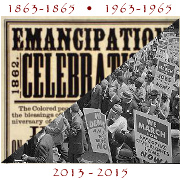A key compromise between northern and southern states in the U.S. Constitution is found in Article I, Section 9:
“The Migration or Importation of such Persons … shall not be prohibited by the Congress prior to the Year one thousand eight hundred and eight.”
In 1794, Congress prohibited the U.S. slave trade to foreign destinations, but was powerless under the Constitution to end the slave trade into southern U.S. ports.
In his annual message to Congress, one year before the constitutional prohibition was to expire, President Thomas Jefferson proposed a total ban on the slave trade. The bill he signed months later would outlaw the importation of slaves into the United States as of January 1, 1808, just as the constitutional compromise expired. The legislation also prohibited U.S. involvement in slave trading throughout the world.
The legal abolition of the U.S. slave trade did not end that trade: While most of the DeWolf family, for instance, ceased their slave trading, James DeWolf’s nephew, George DeWolf, continued to finance slave voyages for another twelve years, until Congress imposed the death penalty for slave trading. Even then, an illegal trade in slaves into the southern U.S. persisted until the Civil War, with substantial numbers of slaves being imported in the 1840s and 1850s as demand rose.
The action of the U.S. to outlaw the slave trade, however, coupled with Great Britain’s similar action months earlier, was a key step in gradually ending the transatlantic slave trade and in spurring the emancipation of slaves throughout the Atlantic world in the coming decades.
In 2007, the U.K. commemorated the 200th anniversary of the abolition of its slave trade with ceremonies at Westminster Abbey featuring the queen and prime minister, and with £20 million ($40 million) for public exhibits and events, conferences, school programs, stamps and coins. The public commemoration of the bicentennial of the abolition of the U.S. slave trade has been, by contrast, understated.
In the U.S., Congress has passed, and President Bush signed, legislation to commemorate the anniversary, but no funding was authorized, and there was relatively little public or private observance of the occasion.
You can use the recent bicentennial as an opportunity to create awareness about the slave trade (as distinct from slavery itself), and the fact that it was primarily conducted on Northern ships, with Northern trade goods and Northern financial backing.
Sources: Eric Foner, “A Forgotten Step Toward Freedom,” New York Times (December 30, 2007); Hugh Thomas, The Slave Trade: The Story of the Atlantic Slave Trade: 1440-1870 (New York: Simon and Schuster, 1997).


